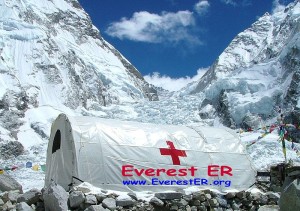Ski season is here and with it the risk of altitude sickness. You know the drill: you start in Chicago (elevation 579 feet) or New York (which averages around 30 feet of elevation when it isn’t swamped by a hurricane). You fly a few hours west, rent a car, drive to Summit County and a few hours later you could be at the top of Breckenridge (13,000 feet). It’s not likely that you jam that much altitude change in a single day, but it’s possible. And even if you start much lower, say in Denver, you can still feel the effects of that sudden 8,000-foot change.
The symptoms of altitude sickness—or acute mountain sickness, which sounds fractionally more romantic—are headaches, nausea, shortness of breath, and palpitations (not the good kind). There is also a reduced ability to exercise, which takes some of the joy out of that $2000 ski vacation. Above 9,500-10,000 feet, there’s a risk of more severe symptoms, including loss of appetite and sleeplessness. And vomiting.
Or worse. As Discovery Fitness and Health points out, “High-altitude pulmonary edema occurs when your heart and breathing speed up to try to get more oxygen flowing to your tissues. Sometimes, fluid leaks from your pulmonary blood vessels into your lungs, making it difficult to breathe and take in necessary oxygen. High-altitude pulmonary edema affects two to four percent of people who ascend higher than 14,000 feet.” And it would be irresponsible not to mention cerebral edema. So there, it is mentioned.
For most people, though, altitude sickness is not serious. But given that even its milder forms are unpleasant, and could cost you those great runs you thought about all through a glum and snowless November, it’s a source of concern. So, are you at risk?
No one seems to know. A quick review of what we call the literature (by which we mean web sites that don’t have a paywall) reveals the medical community giving a big palms-up shrug on the question of susceptibility: “Experts do not know who will get it and who will not. Being male or female and your fitness level play no role in whether you get altitude sickness,” says WebMD. (Some sources suggest that “high-caliber athletes are more prone to suffer from it that non-athletes.”)
It appears that age is not a factor: “Surprisingly, increased age, lack of fitness and illnesses such as asthma do not seem to make people more prone to the problem.” In fact, advanced age might be protective: “Known risk factors include…age less than 50 years.” The helpful altitude.org site expands on this: “Older people tend to get less acute mountain sickness – but this could be because they have more common sense and ascend less quickly.”
Colorado’s Summit Daily offers a good news-bad news explanation: “people over 50 are less susceptible to altitude sickness” because as they age “their brains shrink, requiring less oxygen.”
But it is probably unwise to expect that advanced years will spare you the discomfort of altitude sickness. To prevent its onset, try to ascend slowly. Take time to get used to the altitude. The one drug that is acknowledged to help prevent mountain sickness is Acetazolamide (Diamox). (It causes some minor side effects, “such as tingling fingers and a funny taste in the mouth.”)
And then there is Viagra. Because the erectile dysfunction drug promotes “oxygenation through increased blood flow,” it can help against altitude sickness, according to the Summit Daily. The L.A. Times offers this explanation: “Drugs such as Viagra (sildenafil) and Cialis (tadalafil) can increase nitric oxide levels in the blood vessels of the lungs and help them relax, according to a 2010 report in Progress in Cardiovascular Diseases.”
Science Daily says this about one study: “Sildenafil (Viagra) significantly improved the cardiovascular and exercise performance measures of trained cyclists at high altitude, mostly because the drug helped some participants improve a lot—up to 45 percent—while others showed little change. Sildenafil provided no benefit at sea level.” That doesn’t necessarily imply relief of mountain sickness but it allows you to make up your own joke about performance-enhancing drugs.
Back to business. When you get to altitude and feel unwell, remember:
1. Assume you have altitude sickness until proven otherwise.
2. Stop ascending.
3. If you are getting worse, descend immediately.
Other guidelines include drinking plenty of water and avoiding dehydration, which means avoiding caffeine, alcohol and salty foods. Be patient: symptoms can persist for “12 hours to 3 or 4 days.” WebMD also recommends carbs: breads, cereals, grains, and pasta. Coca leaf tea is also recommended by some, but coca leaves are still illegal in the United States. Even in Colorado.
Image: Everest ER, a nonprofit medical clinic at Mt. Everest base camp, by Everestdoc, via Wikimedia Commons.










